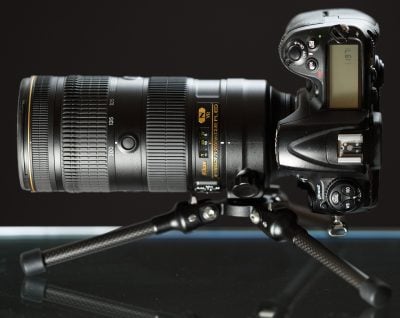Nikon 70-200mm f2.8E VR review
-
-
Written by Thomas
In depth
The AF-S Nikkor 70-200mm f2.8E FL ED VR is a 2.9x telephoto full-frame zoom designed for Nikon DSLRs. Announced in October 2016, it’s the successor to the professional workhorse 70-200/2.8G ED VRii from 2009. Nikon has done a complete optical redesign to improve performance. They’ve also changed some of the exterior layout like swapping the focus and zoom rings and adding extra configurable buttons to the lens for either focus-lock or focus-acquisition. Add the usual claim of improved image stabilization and it’s clear Nikon also wants more money for the new lens: 2800 USD or 3180 EUR (incl. 19% VAT) which is a mark-up of 30% over the current price of the 70-200/2.8G VRii.
So the really important question is: does the new lens deliver on its promises? To find out I tested the Nikkor AF-S 70-200mm f2.8E FL ED VR against its predecessor and will also show you some comparisons with the Sigma and the Tamron offering, all on the demanding D810 body. So if you’re shopping for a professional large aperture telephoto zoom, you’ve come to the right place!
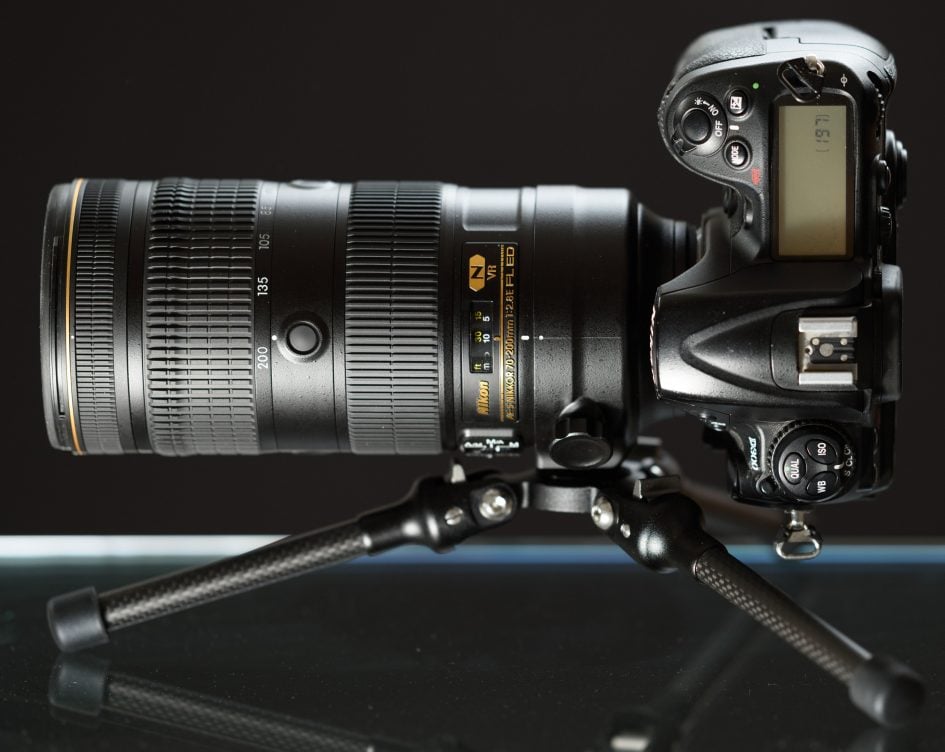
Facts from the catalog
As usual I’ll have a look at the technical data first. I’ve rated the features with a [+] (or [++]), when it’s better than average or even state of the art, a [0] if it’s standard or just average, and [-] if there’s a disadvantage. I’ll compare it mostly with its predecessor, the Nikon 70-200/2.8G VRii (the “predecessor” for short).
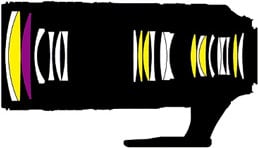
Size (diam. x length): 89 x 203mm (3.5 x 8.0in) plus another 62mm (2.4in) for the lens hood. Zooming does not change the length of the lens as with its predecessor and the competition. The predecessor is slightly longer and slimmer at 87 x 206mm. [0]
Weight: 1357g (47.9oz.). The predecessor is 100g heavier at 1457g (51.4oz.) and has more of its weight distributed towards the front-end. The lens hood adds another 63g, the detachable tripod foot 71g. These parts come in at 50g resp. 81g for the predecessor. The equivalent lenses from Tamron and Sigma weigh about the same. [0]
Optics: 22 elements in 18 groups. This is pretty hefty and even more than the 21/16 from its predecessor. The lens has six extra-low dispersion elements and one fluorite glass. It employs fluorine coating on the front and rear lens to repel water, dust, and dirt plus Nano-coating to reduce flare and ghosting. [+]
Closest focus distance/max. magnification: 1.1m (3.6ft) / 1:4.8. In my test I could go down to 1.0m / 1:4.1 with manual focusing. That’s much better than the 1:7.9 magnification of the predecessor at 1.29m with MF. From a distance of 2m (6.6ft) the magnification of the new Nikon is 1:9.2 while its predecessor reaches only 1:11.2. This is an advantage of 22% for the new lens at close range. Nikon seems to have remembered the painful discussion over the badly shrinking effective focal length of the predecessor. Both the Sigma and the Tamron reach only 1:8 magnification. An additional benefit of the new Nikkor regarding focusing is the addition of 4 evenly spaced buttons right behind the zoom ring that can either act as a focus-lock or activate focus-acquisition. This feature aids wildlife and sports-shooters and was until now only found in Nikon’s long telephoto lenses. [+]
Filter-thread: 77mm which is standard with most pro-lenses and the same as with its predecessor. [+]
Image Stabilization: Yes. Nikon claims their VR yields “up to 4 stops” of stabilization. It can be switched off and also offers a “normal” and a “sport” mode. The latter is recommended when tracking moving objects. Its predecessor offers “normal” and “active” mode. The competition also has image stabilization, dubbed “OS” with Sigma and “VC” with Tamron. [+]
Auto Focus: AF-S with SWM (silent wave motor), so it also works on D3x00/5×00-bodies. Manual-focus override is by simply turning the focus ring. Same with the competition. [+]
Covers full frame/FX or smaller = very good. Same with the competition. [+]
Price: around 3180 EUR new (incl. 19% VAT), the most expensive 70-200/2.8 lens for Nikon bodies, 30% more expensive than its predecessor. Both the Tamron and Sigma are much cheaper at below 1000 EUR. [-]
Comes with a very nice semi-soft lens-case that is well padded, the lens hood is included, reversible for transport, and has an interlock to prevent accidental loss. The lens-caps are standard Nikon’s. The tripod-foot is removable but not compatible with its predecessor. Note the lens hood has changed a little compared to its predecessor: it is now far less probable for the lens to topple over should you put the lens down on its lens hood. When you use the built-in flash you can see the shadow of the lens hood at the bottom of the image from 70mm – 95mm focal length. Without lens hood there is no shadow from the flash within the frame. [+]
Distance information is relayed to the camera, so the Nikon body can do all the advanced exposure-related stuff with this lens. Same with the competition. [+]
Aperture ring: no. Same as with all the other alternatives. [0]
Sealing: yes. A rubber grommet at the lens-mount and a rubberized front-end that acts as a seal when the lens-cap is attached. Plus “every movable part of the lens barrel is extensively sealed”. I’d assume that this is similar to its predecessor and clearly better than from the competition. [+]
The score in the “features-department” is 1[-]/3[0]/9[+]. This is pretty good: The new lens has all the modern bells and whistles, reaches a very decent magnification at close distances, and seems hardened well against the elements. And it’s the lightest lens on the market with Nikon F mount albeit not by a large margin. The only minus-point being the high price.
Here is the angle of view that the Nikon covers with its 2.9x zoom:
Nikon 70-200mm coverage on Nikon D810 (FX) body

Above left: at 70mm, above right: at 200mm
You can attach Nikon’s 1.4x, 1.7x, and 2.0x teleconverter to produce a 100-280/4.0, 120-340/4.8, or 140-400/5.6 zoom respectively.
Alternatives
Three manufacturers now offer stabilized 70-200mm f2.8 zooms for Nikon F-mount:
– Sigma has the AF 70-200mm f2.8 EX DG APO HSM OS, see my Sigma 70-200/2.8 OS review. It got a Recommended in 2013 and is the cheapest 70-200/2.8 at around 850 EUR.
– From Tamron there is their SP AF 70-200mm f2.8 Di VC USD (model A009) for around 950 EUR (see my Tamron 70-200/2.8 VC (A009) review). Plus the successor to this lens, the new Tamron 70-200/2.8 VC G2 model A025, is already on the market.
If you want something lighter with the same zoom range you can also go for one of the following two stabilized 70-200/4.0 lenses: The Nikon 70-200/4.0G EDII VR (850g, see my Nikon 70-200/4.0G VR review where the lens earned a Highly Recommended) going for around 1250 EUR or the Tokina AT-X Pro 70-200/4.0 FX VCM-S for 850 EUR weighing 980g.
Or you can still get the old AF-S 70-200/2.8G VRii from Nikon as long as supply lasts. It got a Highly Recommended in my Nikon 70-200/2.8 G VRii review because it was the best zoom in its category in 2013.
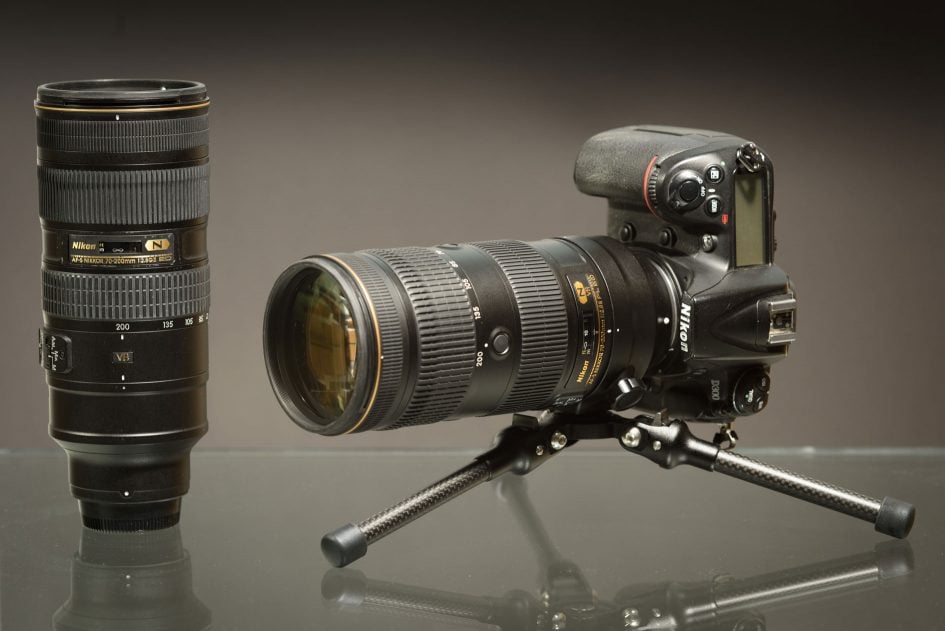
Above left: Nikon 70-200/2.8G VRii, above right: Nikon 70-200/2.8E VR
Focus and image stabilization
Focus accuracy and repeatability is critical to consistently produce sharp shots. Repeatability (the accuracy of focus on the same subject after repeated focus-acquisition) of this lens is very good (measured 99.3% in Reikan FoCal) with no outliers over a series of 40 shots. And there is no performance variation whether the lens focuses from infinity or from a closer distance. At 200mm focal length the lens focuses in around 0.35 sec from infinity to 2m, which is very fast. The predecessor was clearly slower at around 0.6 sec.
The focus ring has no slack/play between its movement and the focus-action and a throw of 130 degrees. The focus ring moves smoothly. It is 29mm broad and easy to grip although the tripod foot gets in the way. The zoom ring turns through 90 degrees and moves smoother than any zoom ring I’ve ever encountered. Its rubber surface is 34mm wide. AF-operation is barely audible from the outside and if you record video with the built-in microphone there’s only a metallic “zip” at the beginning and the end of focus-movement and the AF-drive is very quiet. As you pull focus, you’ll notice some focus breathing: the image becomes more magnified at closer focusing distances. When I adjusted the focus from infinity to 2m, I measured a 4% increase in magnification at 200mm focal length which is pretty low and might well satisfy videographers. In comparison the Nikon 70-200/2.8G VRii decreases magnification by 10% at 200mm focal length.
To test the effectiveness of the image stabilization I did a series of 280 test-shots hand-held with the new lens and its predecessor at 200mm focal length. I set VR to normal mode and shutter speeds were from 1/200 of a second down to 1/13 sec. Shots at 1/200 sec with VR=OFF are used as reference of how good my hand-holding was at the time of the test and Reikan FoCal did the chore of evaluating the sharpness of all shots. In general I can report that the VR of the new lens is good for around 3 stops of image-stabilization. And the number of usable shots at 1/13 sec (4 stops) is still pretty high but you better do a series of shots at that shutter speeds to increase your chances of getting a good one. All-in-all the results from the image stabilizer tests are very good – although not a clear-cut win over its predecessor. But there is one obvious difference: When looking through the viewfinder while VR is active the image is more stable on the new lens than on its predecessor. That might well lead to a more satisfying experience when shooting video.
Check prices at Amazon, B&H, Adorama, eBay or Wex. Alternatively get yourself a copy of my In Camera book, an official Cameralabs T-shirt or mug, or treat me to a coffee! Thanks!
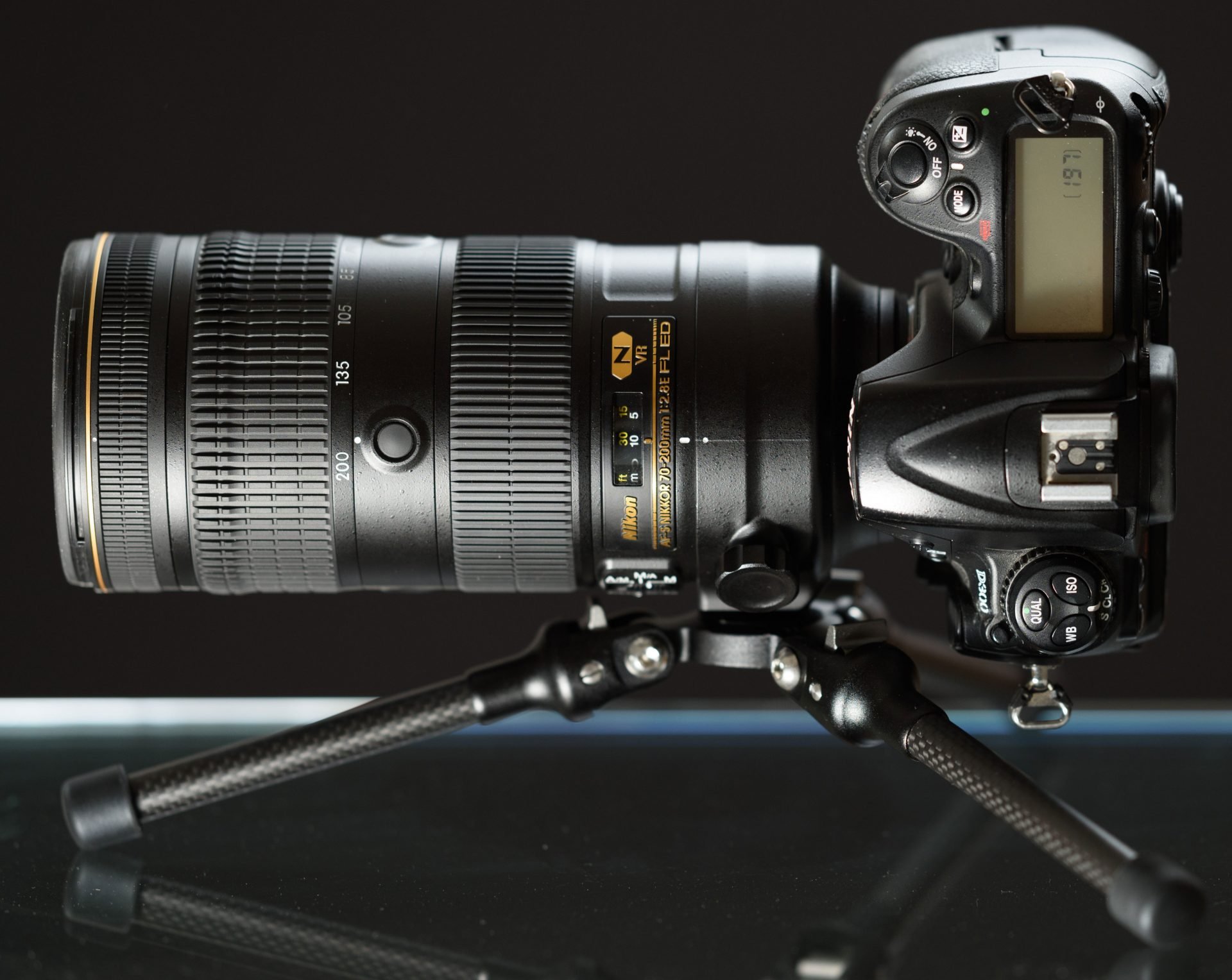
 This is simply the best 70-200/2.8 zoom you can buy for your Nikon camera. It combines the best image quality in its class with a very good image stabilization, an acceptable size and weight, and a professional build. Thus Nikon's new 2.9x telephoto zoom deservedly earns a Highly Recommended rating.
This is simply the best 70-200/2.8 zoom you can buy for your Nikon camera. It combines the best image quality in its class with a very good image stabilization, an acceptable size and weight, and a professional build. Thus Nikon's new 2.9x telephoto zoom deservedly earns a Highly Recommended rating.



